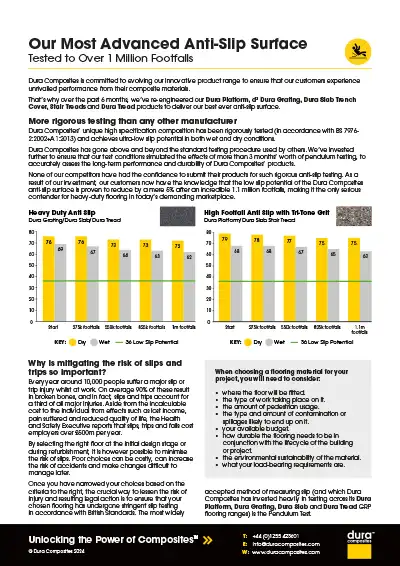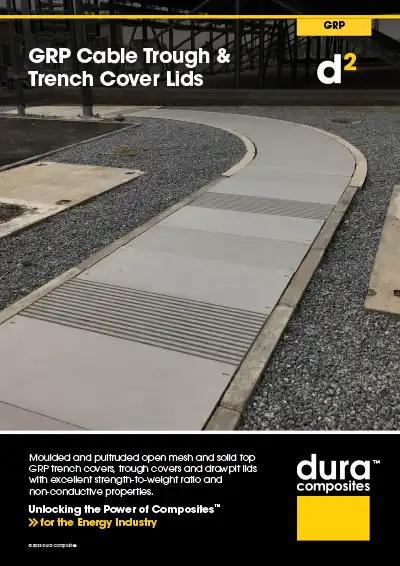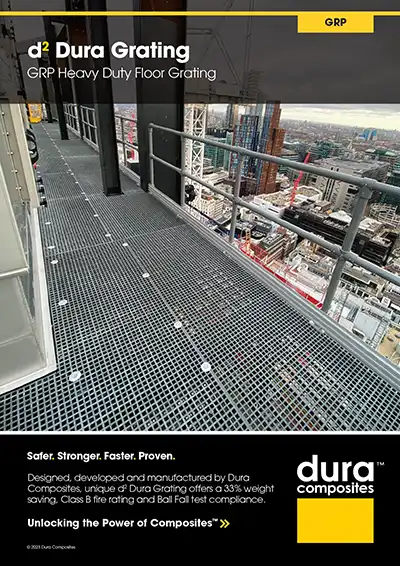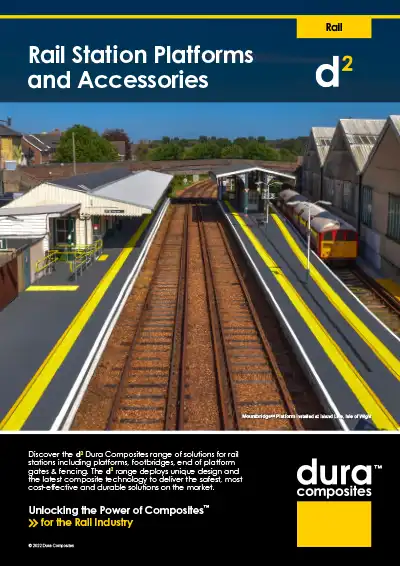
Performance Sheets
Anti-Slip Surface
Our unique high specification composition has been rigorously tested (in accordance with BS 7976-2:2002+A1:2013) and…
Download
General Sales | +44 (0) 1255 446838
Sales Support | +44 (0) 1255 423601 (Option 5)
Transport | +44 (0) 1255 462567
Rail | +44 (0) 1255 440291
Industral & Commercial | +44 (0) 1255 440290
High-Rise | +44 (0) 1255 446830
Decking & Cladding | +44 (0) 1255 440298
Marine | +44 (0) 1255 440297
The article highlights Dura Composites’ innovative d² product range, specifically engineered for optimal anti-slip performance. The importance of mitigating slip and trip risks, especially in workplaces, is emphasised, as they account for a significant portion of injuries and associated costs. The Pendulum Test is explained as a reliable method for assessing slip resistance, aligned with British Standards. Factors to consider when selecting flooring materials are outlined, including usage, contamination risks, durability, and sustainability.
We are continually evolving our innovative product range to ensure that our customers experience unrivalled performance from their composite materials, but with our d² product range, we’ve really hit on something special. We re-engineered our Dura Platform, Dura Grating, Dura Slab Trench Cover, Stair Treads and Dura Tread products to deliver our best ever anti-slip surface. The high specification composition which is unique to Dura Composites has been rigorously tested (in accordance with BS 7976-2:2002+A1:2013) and achieves the ultra-low slip potential in both wet and dry conditions that you’ve come to expect from us.
However, this time we also went above and beyond the standard testing procedure used by others. We invested further to ensure that our test conditions simulated the effects of more than 3 months’ worth of pendulum testing, to accurately assess the long-term performance and durability of Dura Composites’ products.
None of our competitors have had the confidence to submit their products for such rigorous anti-slip testing. As a result of our investment, our customers now have the knowledge that the low slip potential of the Dura Composites anti-slip surface is proven to reduce by a mere 5% after an incredible 1.1 million footfalls, making it the only serious contender for heavy-duty flooring in today’s demanding marketplace.
Dura Composites’ Tri-Tone gritted surface offers superior durability and performance for high-traffic areas and blends with a range of surroundings. Independently tested (in accordance with BS 7976-2:2002+A1:2013), Tri-Tone maintains a fantastic 97.5% of its original slip resistance after 1.1 million footfalls & delivers an 8% increase in slip resistance in wet conditions vs. our previous generation Dura Platform and Dura Slab Structural Stair Tread and Landing surface.
Every year around 10,000 people suffer a major slip or trip injury whilst at work. On average 90% of these result in broken bones, and in fact, slips and trips account for a third of all major injuries. Aside from the incalculable cost to the individual from effects such as lost income, pain suffered and reduced quality of life, the Health and Safety Executive reports that slips, trips and falls cost employers over £500m per year.
By selecting the right floor at the initial design stage or during refurbishment, it is however possible to minimise the risk of slips. Poor choices can be costly, can increase the risk of accidents and make changes difficult to manage later. Once you have narrowed your choices based on the criteria to the right, the crucial way to lessen the risk of injury and resulting legal action is to ensure that your chosen flooring has undergone stringent slip testing in accordance with British Standards.
The most widely accepted method of measuring slip (and which Dura Composites has invested heavily in testing across its Dura Platform, Dura Grating, Dura Slab and Dura Tread GRP flooring ranges) is the Pendulum Test.

The Pendulum Test is a scientifically grounded method designed to measure the dynamic coefficient of friction (CoF). In simpler terms, it assesses how much resistance a floor provides when a person walks on it. This test method is recognised by the Health and Safety Executive as a reliable and robust means of analyzing the slip potential of various flooring types. It adheres to the British Standard, specifically BS 7976-2:2002+A1:2013.
Basically, the dynamic coefficient of friction measures the force needed to keep things moving, like a foot on a floor. The pendulum slip test is vital for ensuring floor safety, offering a precise and standardised way to measure slip resistance. Recognised by regulators and aligned with standards, it’s a valuable tool for assessing and maintaining safe floor conditions.
For those involved in flooring projects, particularly in areas where safety is paramount, ensuring that the chosen products have successfully passed the pendulum test becomes a key aspect. This not only serves as a testament to the safety of the floor environment but also acts as a tangible form of evidence for authorities, insurance companies, and legal proceedings. This test can be used for your protection should you be taken to court; or indeed to prevent claims from the outset.

PTV (Pendulum Test Value) serves as a crucial metric, reflecting the slip resistance of surfaces and indicating the likelihood of accidents. The basic concept is straightforward: higher PTV values correlate with a lower risk of slips. The assessment is grounded in factors such as pedestrian behavior, with the assumption of a reasonably active individual aged 18-60 walking straight at a moderate pace, unencumbered by loads or turns.
When it comes to GRP flooring, determining the appropriate PTV hinges on the intended use of the surface. For instance, a marina pontoon, designed to be wet, should achieve a PTV of more than 36 in both dry and wet conditions. In contrast, a mezzanine factory floor, isolated from potential spillages, may only need to consider a dry PTV.
The PTV scale categorises slip potential: 24 or lower indicates a high risk, 25-35 is moderate, and 36 or more suggests a low risk. Notably, Dura Composites’ flooring products consistently achieve a low slip potential, validated through extensive testing encompassing 1.1 million footfalls.
If you’re responsible for the safety of others in your buildings and premises, then your risk assessment should consider all the factors which contribute to the potential for slip accidents, so you can make an informed decision about the best flooring material for your specific needs.
HSE data shows that over 90% of slips occur when the floor is wet with water or contaminated with food product, so don’t be swayed by suppliers who choose only to present customers with their “dry” results. Your flooring supplier should be able to provide documented evidence of its slip resistance testing, in all travelling directions and in both wet and dry conditions. As well as our extensive slip resistance testing, our live load testing data is available within our searchable Online Product Selector database to help you make decisions based on real data to ensure maximum safety for your project.
As an example of just how well our surface performs, under recent testing, Dura Composites new d² Dura Grating achieved an incredible score of 62 in the wet, (against the low slip threshold of just 36), making it ideal for almost all flooring conditions. If you’d like help and support with your flooring project, don’t hesitate to get in touch with us.

Performance Sheets
Our unique high specification composition has been rigorously tested (in accordance with BS 7976-2:2002+A1:2013) and…
Download
Brochures
Moulded and pultruded open mesh and solid top GRP trench covers, trough covers and drawpit…
Download
Brochures
Designed, developed and manufactured by Dura Composites, unique d² Dura Grating offers a 33% weight…
Download
Brochures
Discover the d² Dura Composites range of solutions for rail stations including platforms, footbridges, end…
Download